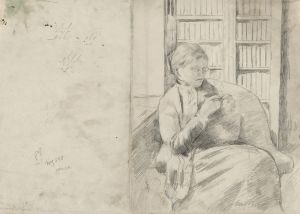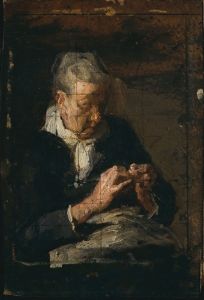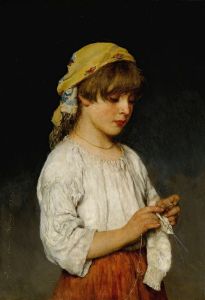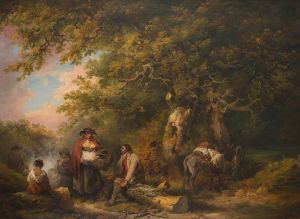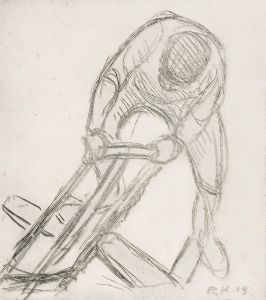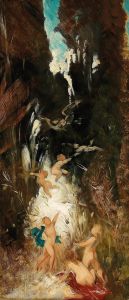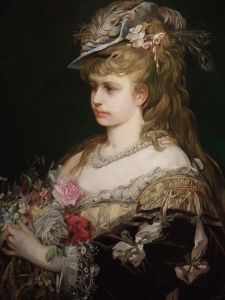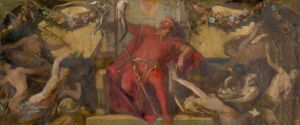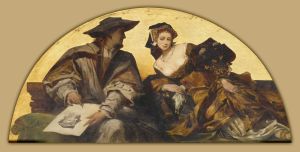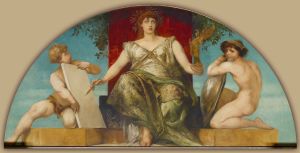
Entwurf zum Festzug 1879 – Die Tischler, Drechsler und Binder
A hand-painted replica of Hans Makart’s masterpiece Entwurf zum Festzug 1879 – Die Tischler, Drechsler und Binder, meticulously crafted by professional artists to capture the true essence of the original. Each piece is created with museum-quality canvas and rare mineral pigments, carefully painted by experienced artists with delicate brushstrokes and rich, layered colors to perfectly recreate the texture of the original artwork. Unlike machine-printed reproductions, this hand-painted version brings the painting to life, infused with the artist’s emotions and skill in every stroke. Whether for personal collection or home decoration, it instantly elevates the artistic atmosphere of any space.
Hans Makart's "Entwurf zum Festzug 1879 – Die Tischler, Drechsler und Binder" is a notable work that reflects the grandeur and ceremonial spirit of late 19th-century Vienna. Makart, an Austrian painter renowned for his historical and allegorical themes, was a central figure in the Viennese art scene during this period. His works are characterized by their vibrant color palettes, dynamic compositions, and opulent detail, which are all evident in this particular piece.
The painting "Entwurf zum Festzug 1879 – Die Tischler, Drechsler und Binder" was created as part of a series of designs for a grand parade celebrating the silver wedding anniversary of Emperor Franz Joseph I and Empress Elisabeth of Austria. This event, held in 1879, was a significant cultural and social occasion, showcasing the unity and prosperity of the Austro-Hungarian Empire. Makart was commissioned to design the parade, which included a series of floats representing various trades and guilds, each illustrating the cultural and economic vitality of the empire.
In "Die Tischler, Drechsler und Binder," Makart focuses on the craftsmen of carpentry, turning, and cooperage. These trades were essential to the economic fabric of the time, providing necessary goods and services for both everyday life and the burgeoning industrial sector. The painting captures the essence of these trades through its detailed depiction of artisans at work, surrounded by the tools and products of their crafts. The composition likely includes figures engaged in their respective trades, demonstrating skill and dedication, which were highly valued attributes in the society of the time.
Makart's ability to convey the dignity and importance of these craftsmen is a testament to his skill as an artist. His use of color and form not only highlights the physicality of the work but also imbues the scene with a sense of pride and celebration. The painting serves as both a tribute to the craftsmen and a reflection of the broader cultural and economic achievements of the Austro-Hungarian Empire.
The significance of Makart's work extends beyond its immediate historical context. It represents a period in art where the depiction of everyday life and labor was gaining prominence, influenced by the broader movements of realism and historicism. Makart's approach, however, remains distinct for its theatricality and grandeur, setting his work apart from the more subdued tones of his contemporaries.
"Entwurf zum Festzug 1879 – Die Tischler, Drechsler und Binder" is a fine example of Makart's contribution to the visual culture of his time. It encapsulates the spirit of celebration and the acknowledgment of the working classes within the context of a grand imperial festivity. The painting remains a valuable piece for understanding the intersection of art, culture, and society in late 19th-century Vienna, offering insights into the values and aesthetics that shaped this vibrant period in European history.





